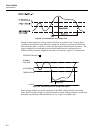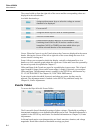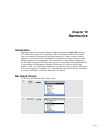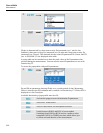
Fluke 433/434
Users Manual
10-4
F3
Assign arrow keys to Cursor or vertical Zoom operation.
F4
Return to table screen.
F5
Switch between HOLD and RUN of screen update.
Switching from HOLD to RUN invokes a menu to select
immediate (NOW) or TIMED start time which allows you
to define start and duration of the measurement.
Tips and Hints
The harmonic number indicates the harmonic frequency: the first harmonic is the
fundamental frequency (60 or 50 Hz), the second harmonic is the component with two
times the fundamental frequency (120 or 100 Hz), and so on. The harmonics sequence
can be positive (+), zero (0), or negative (-). The table below gives an overview.
Order 1st 2nd 3rd 4th 5th 6th
Frequency
60 Hz
50 Hz
120 Hz
100 Hz
180 Hz
150 Hz
240 Hz
200 Hz
300 Hz
250 Hz
360 Hz
300 Hz
Sequence + - 0 + - 0
Order 7th 8th 9th 10th 11th ...
Frequency
420 Hz
350 Hz
480 Hz
400 Hz
540 Hz
450 Hz
600 Hz
500 Hz
660 Hz
550 Hz
...
Sequence + - 0 + -
...
Positive sequence harmonics try to make a motor run faster than the fundamental;
negative sequence harmonics try to make the motor run slower than the fundamental. In
both cases the motor looses torque and heats up. Harmonics can also cause transformers
to overheat. Even harmonics disappear if waveforms are symmetrical, i.e. as equally
positive and negative.
Zero sequence current harmonics add in Neutral conductors. This can cause overheating
of these conductors.
Distortion. Current distortion is to be expected in a system with non-linear loads like DC
power supplies. When the current distortion starts to cause voltage distortion (THD) of
more than 5 %, this signals a potential problem.
K-factor: this is an indication of the amount of harmonic currents and can help in
selecting transformers. Use the K-factor along with KVA to select a replacement
transformer to handle non-linear, harmonics-rich loads.


















